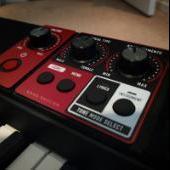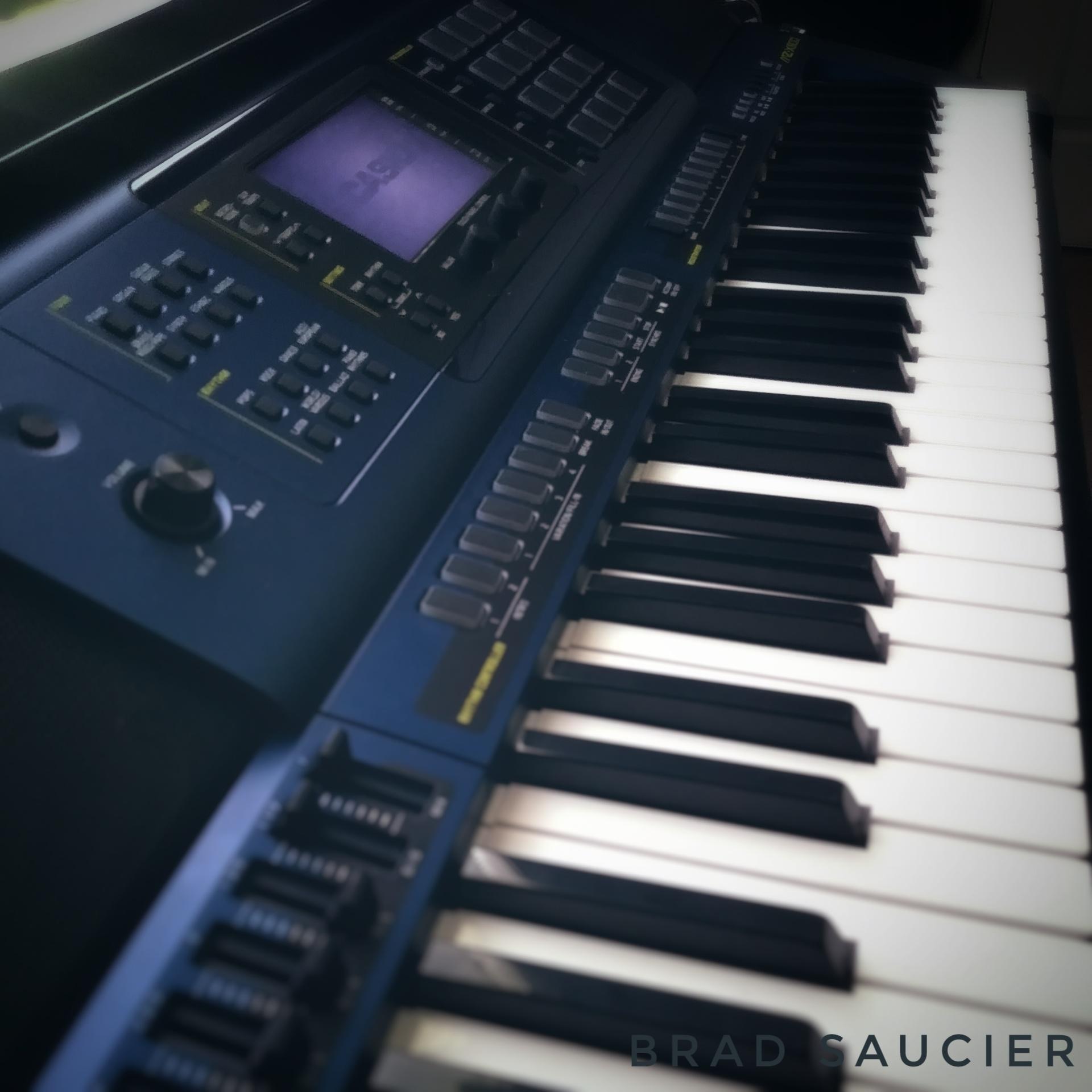-
Posts
8,758 -
Joined
-
Last visited
Content Type
Profiles
Forums
Downloads
Everything posted by Brad Saucier
-
Which model do you have?
-
Thank you. That metallic sound is the damper noise effect being triggered since the piano thinks the pedal is depressed. I've never seen this happen before with a Casio pedal. It is definitely not working correctly. Since the keyboard is 3 weeks old, I would contact the dealer and ask them for assistance on this.
-
The app works with both the PX-S3000 and CDP-S350.
-
Can you attach of short video of what is happening? Is this something that recently started happening?
-
Thank you. Yes, that pedal should be working correctly. I would double check that the pedal is connected to the damper pedal jack before powering up the keyboard. When it's powering up, be sure to refrain from touching the pedal until the power up process is complete. Once you can play the piano and hear sound, you'll know the power up process is complete. Is the pedal still working backwards?
-
Can you attach a photo of the pedal so we can confirm it is the correct pedal? Did it come in the box with the PX-S1000 and is a Casio model SP-3? Or, did it come in a separate box?
-
You can try blowing some air between the keys. If that doesn't help, I would contact the dealer you purchased it from.
-

Using CDP s100 as a midi device for Cubase
Brad Saucier replied to Alan Anibal's topic in Casio CDP Series
The driver was already installed automatically. You'll need to select Casio USB MIDI as your input device in Cubase. This is really a how-to Cubase question. -

USB Midi driver for Windows 10
Brad Saucier replied to jirka's topic in General CTK / WK / LK Discussion
Windows 10 is backwards compatible with Windows 8.1 drivers. -
Reverb, chorus, and delay are system effects. DSP is an insert effect. In other words, DSP is the only tone specific effect. Each system effect type is shared by all of the tones at any given moment and stored by registrations, not by individual tones. This is why you can only adjust the sends levels for system effects. Imagine the conflicts if every user tone was trying to change the reverb type that the entire system is using. If you're familiar with using an analog mixing board with effects, it's the same system. DSP is a channel insert effect. System effects are channel sends to main effects.
-
Hi Nathaniel. Welcome to the forums. Downloads are found by looking in our downloads section. It is divided into two main sections, Casio or community content, then divided under each section by keyboard model and type of files. https://www.casiomusicforums.com/index.php?/files/
-

USB Midi driver for Windows 10
Brad Saucier replied to jirka's topic in General CTK / WK / LK Discussion
LK-300TV Driver for Windows 10 64 bit.... https://support.casio.com/en/support/download.php?cid=008&pid=72 There is no universal driver for all Casio models. A small number of very early (over 10 years old) USB equipped models needs a special driver like the one above. All Casio USB equipped keyboards made in the last 10 years or so are plug and play, and will automatically install. -
A stereo TRS cable from the CTX headphone jack to the line in (assuming it is also a stereo TRS jack) on the audio interface in the picture you shared should work fine
-
It sounds like you are using the song sequencer. Are you bouncing song sequencer playback to the flash drive audio recorder? It's difficult to know exactly what's happening. I suspect quantize might be the issue, but I'm nowhere near sure about that. A short audio clip or video would help.
-

newbe needing info on 1 finger chords
Brad Saucier replied to old piano player's topic in CT-X3000 / CT-X5000
Are you looking for a way to play piano chords in the left hand using just 1 finger? It's not really designed to that, however I think there's a workaround. Are you familiar with using the mixer? You can go into the rhythm part group of the mixer and turn off parts 3, 5 and 6, then you'll be left with piano on part 4 that will detect one finger Casio chords using the piano sound. -
@Clevelander Can you give a few more details on how you got started? Are you using a single phrase in zone 1? Or, 2 phrases and 2 zones? Or, using the song sequencer?
-

newbe needing info on 1 finger chords
Brad Saucier replied to old piano player's topic in CT-X3000 / CT-X5000
The auto accompaniment system is partly made up of a chord detection system designed to drive the rhythms. Whenever a rhythm is playing, chords that are detected will cause the rhythm to follow the chord progression being played on the keys. Once a rhythm is playing, those placeholder tones will go away. -

newbe needing info on 1 finger chords
Brad Saucier replied to old piano player's topic in CT-X3000 / CT-X5000
That sound comes from placeholder tones which sound when auto accompaniment is turned ON but a rhythm is not yet playing. Auto accompaniment is designed to be used with rhythms. Can you describe a little more of what you're looking to do? -

newbe needing info on 1 finger chords
Brad Saucier replied to old piano player's topic in CT-X3000 / CT-X5000
Can you attach a short audio clip? -

PX-S3000 Midi Only controls the Piano Sound??
Brad Saucier replied to Justin Laluga's topic in Privia PX-S Series
I'm not familiar with the keystep. Is it capable of sending program change and bank select data to another MIDI device?- 4 replies
-
- casio px-s3000
- midi
-
(and 3 more)
Tagged with:
-
The only method I can personally confirm with an Android device is using an OTG adapter combined with a standard USB printer cable.
-
It sounds normal to me. I have a collection of keyboards with speakers built in, and all of them have a certain level of self noise. It is the nature of amplifier systems used to power speakers. The only stereo amps I have heard with virtually no noise are in higher end audio systems.
-

PX-S3000 Midi Only controls the Piano Sound??
Brad Saucier replied to Justin Laluga's topic in Privia PX-S Series
The PX-S3000, and many other Casio models, has a 48 part multi-timbral sound engine. MIDI IN does not share the same 16 parts that is used for upper and lower parts, rhythms, etc. It uses another 16 parts shared only with the MIDI recorder on the PX-S3000. This is why changes to upper 1 do not affect what you're hearing. You can do one of two things. You can have your external controller send bank and program change data to select tones (all of the needed data is in the appendix charts for the S3000), or you can use the MIDI recorder, track 1, to select tones for channel 1.- 4 replies
-
- casio px-s3000
- midi
-
(and 3 more)
Tagged with:
-
1. How do I save changes made in the Mixer mode? With my Korg that would be saving the changes to a Style or Song. For upper/lower parts, and other keyboard performance parts, mixer settings can be saved to registrations. For MIDI recorder songs, mixer settings are saved in each song. For individual parts within a rhythm, those mixer settings are saved in each rhythm. 2. Why isn't the Function mode savable to a User Tone? And if you can't save it to a User Tone, what's the point? Can you be more specific? 3. How do I switch the Mixer settings from Keyboard to Drums and auto-accompaniment? 4. Once I'm on the Drums or Auto-Accompaniment page in the Mixer, is there a way of changing the volume for all the drums at once? all the accompaniment at once, including drums? I appreciate having all that Mixer control, but often times I just want ALL the drums or accompaniment to be louder/softer, quick and easy. Overall rhythm volume control is in the function menu as accomp volume. This setting can be saved as a registration. For fine control over volume of each part within a rhythm, it is necessary to edit a rhythm and store the changes as a user rhythm. 4. Is the Casio Data Management software ONLY for transferring Tones and other files to and from the keyboard to a USB stick? Tried it last night, was really surprised I couldn't even rename the User Tones on my Win10 laptop, which is a slow process using just the keyboard. It is for transferring files only, not for editing files. 5. Is it true that in order to edit FX that I have to jump from Function mode (which reverb for example) to Edit mode (Send to each of the FX)? System effect types are chosen in the function menu. Send levels for system effects can be adjusted in the mixer and saved as a registration, or can be done while editing a user tone and saved with the tone. DSP effects are always done from tone editing and saved as user tones. 6. The Part/Mixer button- what's the difference? For some operations you jump back and forth between the Part and Mixer, I end up not knowing where I am and what I'm doing. Long press the button to enter mixer mode, then short press it to enable part selection and part group selection. While the part lamp is ON in mixer mode, the plus and minus buttons will select different mixer part groups. And, the number buttons will select a specific part by number. When the part lamp is OFF, the number keys become cursor keys, up/down left/right. The cursor menu navigates left and right through all mixer parts. Once you land on a desired mixer part, the up/down cursor keys will navigate all of the editable parameters for that part.


